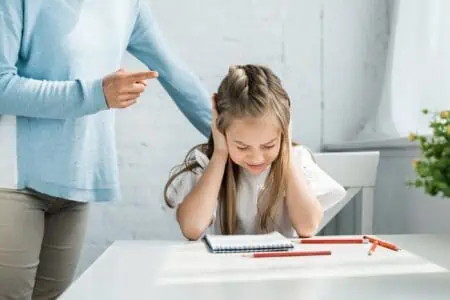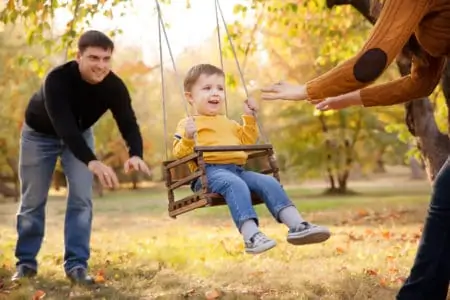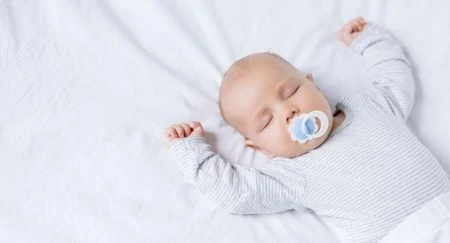Child abuse in the United States is a grave concern, with one in seven children facing physical, sexual, or parental neglect each year.
The lasting repercussions can extend into adulthood, manifesting as mental health challenges, academic struggles, and even perpetuating the cycle of abuse. Our meticulously curated guide dives deep into these statistics, offering insights on national data by state and the profound long-term effects.
Through these 30 alarming child abuse statistics, we aim to foster awareness and empower you with resources to make a tangible difference.
10 Key Facts About Child Abuse
As an overview, here are 10 of the most notable facts regarding child neglect.
- In the United States, at least one in every seven children has been a victim of child abuse or neglect in the past year.
- The states that had the most reports of child abuse included Texas, California, New York, Illinois, and Ohio.
- The United States’ yearly spend associated with child abuse and neglect was around $592 billion in 2018.
- A study found that childhood abuse victims are more likely to experience nightmares, headaches, and frequent shortness of breath.
- Child abuse victims are at a higher risk for poor academic performance due to the negative impact on their cognitive abilities as a child.
- Child abuse rates are five times higher for children living in poverty or low socioeconomic status than those who don’t.
- In 2021, over 49,000 infants were recorded as experiencing prenatal substance exposure. These children are at higher risk of being abuse victims.
- About 30 percent of child abuse victims will come to later abuse their own children.
- The key law addressing child abuse is the Child Abuse Prevention and Treatment Act (C.A.P.T.A.), which was enacted in 1974.
- Strengthening economic support by increasing financial security and making workplaces more family-friendly is proven to help reduce child abuse.
Defining Child Neglect and Abuse
The definition of child neglect is the failure to care for a child responsibly (1). This entails providing the child with the necessary food, clothing, medical care, shelter, and supervision in a way that considers the child’s health, safety, and well-being.
Many states also define child neglect as failing to provide medical or mental health care. Eight states define medical neglect as withholding treatment or nutrition from disabled children who have life-threatening conditions.
Child abuse can be defined as physical, sexual, or emotional abuse. It also includes parental substance abuse and child abandonment.
Physical abuse is defined as “nonaccidental physical injury to the child”. This includes kicking, burning, hitting, or biting the child. In 18 states, human trafficking is also categorized under physical abuse.
Sexual abuse is defined as allowing the child to engage in sexual activities, prostitution, or child pornography.
Emotional abuse is defined as a mental injury to the child that affects their psychological or emotional capacity and stability. This may result in behavioral, cognitive, or emotional changes, anxiety, depression, withdrawal, or aggression.
30 Shocking Child Abuse Statistics
Positive and loving parenting can be a life-changing experience for a child. But unfortunately, not every child has this privilege. Below are 30 child maltreatment statistics across various types of abuse.
Keep In Mind
If you need support or wish to support a victim of child abuse, we have resources at the end of this article.
Prevalence of Child Abuse
Child abuse statistics are more alarming than commonly perceived. To outline the seriousness and rifeness of child abuse, we have studied the occurrence of child abuse in the United States. Below are seven facts to consider.
- One in seven children experience abuse: In the United States, at least one in every seven children has been a victim of child abuse or neglect in the past year (2). However, the number is believed to be higher as many cases won’t have been reported. A separate study found that one in four children experience child abuse or neglect at some point in their childhood (3).
- Over seven million reports made: In 2021, child abuse reports involved 7.2 million children (4). Four million referral reports were made for child maltreatment.
- The states with the most child abuse: States with the highest child abuse reports include Texas, California, New York, Illinois, and Ohio (5).
- The types of child abuse: The main types of child abuse include physical abuse, neglect, and sexual abuse. One study found that 18 percent experience physical abuse, 78 percent experience neglect, and nine percent experience sexual abuse. Emotional abuse is also a prevalent type of child abuse, but there aren’t concrete facts for this yet.
- The number of deaths by child abuse: It’s hard to find the exact statistic, but there are roughly 4.8 deaths per day in the United States caused by child abuse (6). This number has steadily increased since 1998, when it was 3.13 deaths per day. The peak occurred at five in 2010 and again in 2019.
- Economic Impact of Child Abuse: The United States’ yearly expenditure associated with child abuse and neglect was around $592 billion in 2018. This is more expensive than the cost associated with heart disease and diabetes.
- The victims are primarily toddlers and babies: The most likely to experience child abuse are babies and toddlers (7). Fifteen percent of victims are less than a year old. Twenty-eight percent of victims are less than two years old.
Effects of Child Abuse in Adulthood
Child abuse can have long-term consequences for the victims. There is significant evidence that victims of child abuse are more likely to experience mental health disorders and substance abuse. To break it down, here are eight figures about the lasting effects of child abuse.
- Victims are more likely to have poor health behaviors: Victims of child abuse are more likely to smoke, use drugs and alcohol, engage in unprotected and unsafe sex, and have a lower health status (8).
- Victims are more likely to experience somatic symptoms: A study found that childhood abuse victims are more likely to experience nightmares, headaches, pain in the private area, insomnia, loss of appetite, stomach problems, chest pain, and frequent shortness of breath.
- It increases the likelihood of victimization in adulthood: Victims of childhood abuse are more likely to become abuse victims in adulthood.
- Mental health effects from child abuse: Child abuse can cause psychological challenges, including low self-esteem and depression (9). Those who have experienced child abuse may experience poorer cognitive skills, social challenges, and PTSD (post-traumatic stress disorder).
- Child abuse victims struggle with adult relationships: A study found that around 33 percent of childhood victims experienced psychiatric disorders (10). This has many effects, including the ability to make and keep adult relationships.
- Victims are more negative than non-victims: Those who have experienced child abuse are more likely to show negative emotions than positive emotions compared to those who haven’t experienced this abuse (11).
- Victims might not do as well in school: Child abuse victims are at a higher risk for poor academic performance due to the negative impact on their cognitive abilities as a child. This can lead to less ability to process tasks and memorize information.
- Child abuse victims are more likely to commit crimes: As adults, child abuse victims are twice as likely to commit or engage in crimes compared to those who aren’t victims (12). Child abuse victims may engage in crimes earlier than others. These children are more likely to be arrested as juveniles or adults. These costs are estimated to be between $6.7 billion and $62.5 billion per year in the United States.
Prevention and Risk Factors
It’s essential to look at the risk factors that may increase the chance of being a child abuse victim. Acknowledging risk factors can ultimately lead to prevention if, over time, authorities can tackle the root cause. Here are seven child neglect statistics relating to risk factors.
- Children living in poverty are five times more likely to be victimized: Poverty is a considerable risk factor for child abuse. Child abuse rates are five times higher for children living in poverty or low socioeconomic status than those who don’t.
- Drug abuse is a huge risk factor: Studies found that about 26 percent of victims had a caregiver who abused drugs (13).
- Domestic violence is a huge risk factor: Studies found that about 28 percent of child abuse victims had a caregiver who engaged in domestic violence.
- Alcohol abuse is a huge risk factor: Studies found that 11.5 percent of child abuse victims have a caregiver who abuses alcohol.
- Prenatal substance exposure as a risk factor: In 2021, over 49,000 infants were recorded as experiencing prenatal substance exposure. Eighty-four percent of these children have the drug abuse risk factor, and 15.5 percent of them have both the alcohol and drug abuse risk factor.
- Victims of child abuse become risk factors: About 30 percent of child abuse victims will later abuse their own children (14). Therefore, child abuse victims become a child abuse risk.
- Unwanted pregnancies increase child abuse: Children who were unplanned or unwanted have an increased risk of being victims of neglect and psychological aggression (15).
Facts About Laws, Policies and Interventions
After reviewing the horrors of child maltreatment statistics, it’s worth noting some of the information surrounding laws and interventions. Let’s have a look at what the U.S. government and authorities have in place to prevent child abuse and protect victims.
- About 1.8 million children received prevention services (16): Of the seven million children involved in child abuse reports in 2021, child protection services investigated three million of these. Compared to previous years, this number was significantly lower due to pandemic restrictions. Around 1.8 million children received child abuse prevention services.
- The Children’s Advocacy Center (CAC) helps prevent child abuse: CAC serves more than 380,000 children annually. They offer science-based counseling and therapy to over 220,000 children, intending to help them heal from trauma and avoid ongoing effects. Of those who have hurt children, 98 percent never hurt another child after receiving help from CAC.
- The Child Abuse Prevention and Treatment Act (CAPTA): The key law addressing child abuse is the CAPTA, which was enacted in 1974 (17). CAPTA provides federal funding to states to prevent, assess, investigate, prosecute, and treat child abuse cases. It also gives grants to nonprofit organizations.
- Laws vary state by state: Each state within the U.S. has distinct laws surrounding child abuse and neglect (18). Generally, “neglect” is defined as the lapse of care from the parent or caregiver, with some degree of intention. This can include not sending your child to school, lack of proper care, or mental incapacity of the parent.
- Common issues that arise from child protection cases: Once a child protection case has been made, it’s not straightforward. In fact, there are many more complications to consider. This includes children being placed in foster care, families being prosecuted more harshly if they are poor or people of color, and parents needing access to services that are unavailable to them. Other issues include children remaining in foster care for longer than necessary or parents not understanding what is going on through court proceedings. There needs to be more education and support for families during this time.
- Intervention strategies: There are many strategies that local authorities can put into practice to reduce child abuse across America (19). For example, strengthening economic support by increasing financial security and making workplaces more family-friendly is proven to help. Another great strategy is educating parents on positive parenting rather than opting for corporal punishment when they are angry with their children.
- What parents can do to intervene: Whether you know of vulnerable families or you are part of one yourself, there are many things that parents can do to support other parents or even themselves. For starters, get involved in your local community to find other parents who you can support or get support from. It’s also beneficial to teach children their rights so they can understand that abuse is not acceptable. Finally, if you know of a child abuse victim, it’s crucial that you report the case to the police.
- Opening up the surveillance: Child abuse cases have been tracked through social and child protection services for a long time. But now, the CDC is opening up the surveillance (20). It is now to be monitored more closely and widely, including reports from medical communities, practitioners, advocates, public health officials, and more. This will allow authorities to assess, track, and prevent child abuse more effectively.
What Are the Warning Signs of Child Neglect?
Unfortunately, child abuse is quite prevalent in the United States, with around one in seven experiencing it. It’s important to know the warning signs of child abuse and neglect. Here are 12 significant signs that a child may be a victim:
- Poor appearance and hygiene: Look out for children who appear dirty or smelly, are underweight and hungry, and have unclean clothing. It’s also important to look out for children who don’t have warm clothes for winter or cooler clothes for summer.
- Nappy rash: Nappy rash is common, but frequent and untreated nappy rash can be a sign of neglect.
- Missing school: Frequently missing school with little to no reason is a cause for concern.
- Behavior signs: Behavior warning signs include infants excessively crying, development delay, chronic bedwetting, being afraid of their parents, depression, and issues with eating.
- Physically aggressive behavior: Look out for children who are verbally abusive or physically aggressive with their peers or objects. You should also take note of cruelty towards animals.
- Physical symptoms or illness: Look out for physical symptoms such as headaches, worsening medical issues such as asthma, difficulty walking or sitting, painful urination or bowel movements, and unexplained vomiting.
- Bruising or burns: Unexplained bruising, welts, or burns, especially on the face or if there are many in one area, can be a sign of abuse. You should also note if the pattern reflects an object, such as a belt, hand, or bite marks.
- Injuries in uncommon places: It’s normal for kids to have wounds on the knees, hands, and elbows — these often occur from bumping into objects or falling over. But if the child has injuries on the neck, thighs, back, bum, or torso, this can often be a sign of abuse.
- Signs of neglect in children or teens (21): Children and teens who experience neglect may have a sudden change in behavior or academic performance. They may also have an ongoing medical problem that isn’t being addressed. You may also notice they are watchful, as if expecting the worst, often hungry, or have poor body odor.
- Signs of sexual abuse: Signs of sexual abuse include pain in the genital area, difficulty walking or sitting down, bleeding from the genital area, complaints of tummy aches or headaches, and frequent UTIs. Some sexual abuse victims may also show behavioral changes such as withdrawal, depression, inappropriate play, extreme weight change, suicide threats, and hysteria.
- Health issues: Some more health issues to note include anemia, dental issues, poor language skills, rashes, ringworm, flea bites, a swollen stomach, fatigue, and growth issues.
- Home circumstances: Children who are being neglected are often living in poor environments, such as an unheated home. They may also be left at home for long periods. In other situations, children have to take care of their younger siblings, which is a form of neglect and child abuse.
What To Do
If you suspect a child is a victim of abuse or neglect, the FBI emphasizes the legal obligation to make a report (22). If you are a teacher, daycare worker, school bus driver, doctor, nurse, social worker, victim service provider, law enforcement officer, prosecutor, or mental health provider, you are legally required to make a report. Otherwise, you could face a criminal offense. If you are outside these roles, do not confront the abuser. Instead, call 911 and make a report. In some cases, parents may feel uncomfortable about their own behavior towards their child. If this is the case, you can contact the Employee Assistance Unit, where you can speak to Parents Anonymous, who will support and train you on how to cope with stress. The number is (800)-554-2323.
Playing Our Part in Preventing Child Abuse
Child abuse is a very prevalent and serious national issue that is getting worse and worse every year. But there are things that we can all do to prevent it from happening. It’s crucial that you learn the signs of child abuse and report any cases to the police.
You can also volunteer with or donate to nonprofit organizations that work to prevent child abuse. This includes the American Professional Society on the Abuse of Children, Avance Inc., Child Lures Prevention, Circle of Parents, Healthy Families America, and more. For a comprehensive list, check out this list of organizations.
If you are, have been, or know someone who is a victim of child abuse or child abandonment, support is available through Enough Abuse Campaign’s resources for survivors. Notable resources include Adult Survivors of Child Abuse and Childhelp.
Finally, if you are a parent who feels uncomfortable about your parenting styles and you wish to make changes, there is support from many places. Parents Anonymous is a great resource. You may also wish to seek counseling, therapy, or anger management classes to overcome your struggles. This can lead to better parenting choices and reduce the risk of child abuse.






